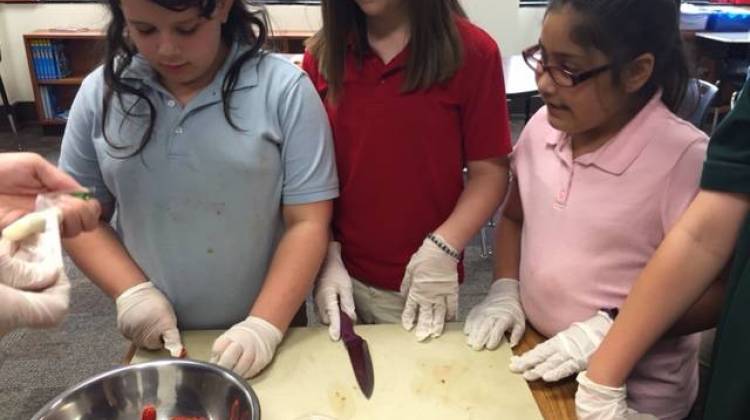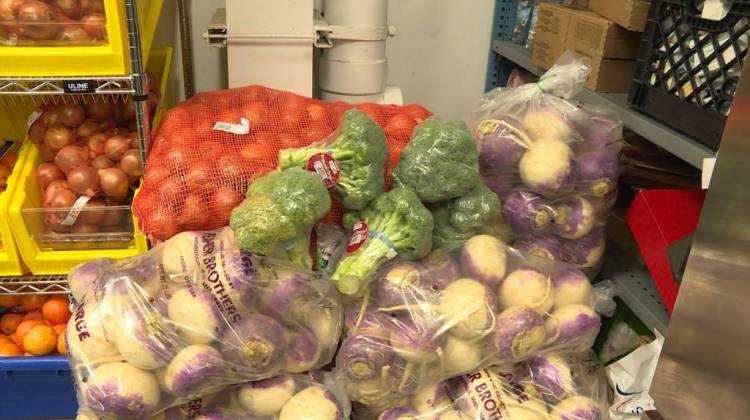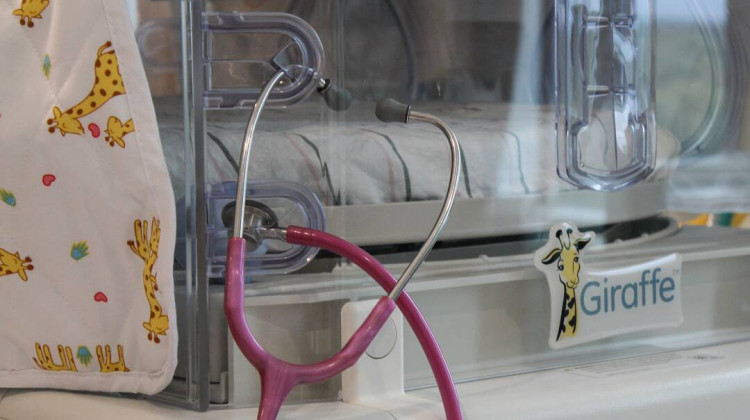A food desert is a neighborhood with low, or no, access to fresh fruits and vegetables, dairy and meats. It is a growing national problem, and in Indiana 59 percent of counties have food deserts.
Some state lawmakers have proposed legislation to fight the problem, but much of the work remains with nonprofits and community organizations.
One such program is at work at five Indianapolis Public Schools, including IPS 58 in Indianapolis. On a recent spring day, Patachou Foundation volunteer Alana Bruggner laid out an assortment of seeds for a group of six children to try.
They all seemed to like them.
As part of the program to teach healthy habits, the elementary school aged children also plant another seed in a small pint container that they’ve each decorated with bright colored paint. If taken care of, this seed will grow into a basil plant.
Matthew Feltrop is the executive director at the Patachou Foundation.
"The kids that we serve are hungry…Hunger in the U.S. doesn’t look like it does in a third world country," Feltrop said. "Hunger with kids looks like maybe they’re overeating, they might be obese, they might have high blood pressure or diabetes at a young age."
About 30 percent of Indiana’s youth are overweight or obese.
Indiana State Rep. Robin Shackleford, D-Indianapolis, has been working to increase healthy food access in Indiana. She points out a study done at Indy East Food Desert Coalition in 2013.
"Some of the findings were that 39 percent of the people (in Indianapolis) lived within a grocery store compared to 63 percent that live within 10 minutes of a convenience store or fast food restaurant," Shackleford said.
| Source: USDA, CountyRankings.org |
But she says it’s not just a problem in Indy. Counties all over the state have these same access issues. That’s why for the past two year’s she’s coauthored legislation that would provide funding for businesses, organizations or individuals that set up shop in low access areas.
"If you want to do a grocery store... farmer’s markets, delivery projects, food cooperative.. and we’re also looking at the outreach. Teach people what are those healthy foods and what are the options," Shackleford said.
Options like blueberries instead of french fries, cucumbers instead of chips, a caprese salad instead of pizza.
Shackleford says last session the legislation died because of a technicality but that a majority of lawmakers are supportive of the effort.
Other organizations are also working to change healthy food habits. Jump IN is a collective impact group in central Indiana that has a goal to reduce childhood obesity by teaching healthy habits.
CEO Ron Gifford says food access issues are the correlation between poverty and obesity.
"You lack ready access… you don’t have the resources to access food the way others do and you’re forced to eat food that is unhealthy," Gifford said.
In 2014 Indianapolis was ranked dead last in a report that ranked areas with healthy food access, also known as a food deserts.
Gifford says he’s heard people refer to these areas instead as "food swamps."
"The reality is, and particularly in these lower income neighborhoods, there is not a lack of food... there is an abundance of bad food," Gifford said.
An estimated 6 percent of Hoosiers have limited access to healthy food. Shackleford says she will introduce another bill next legislative session.
 DONATE
DONATE









 Support WFYI. We can't do it without you.
Support WFYI. We can't do it without you.